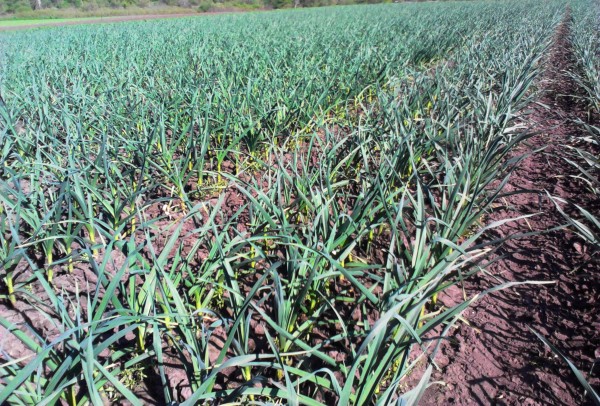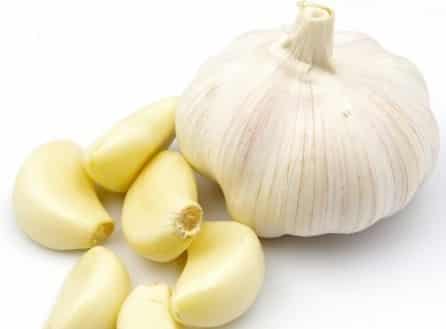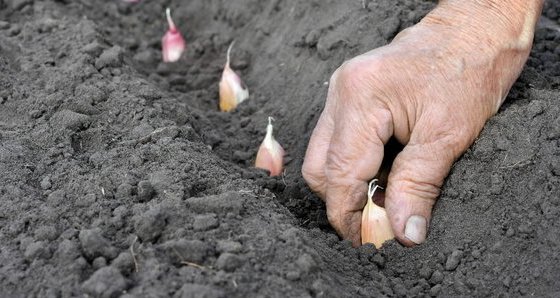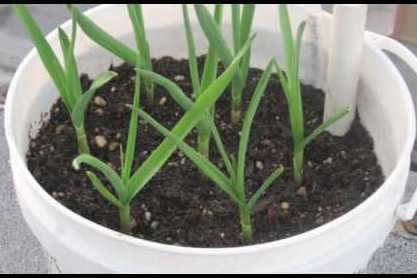Garlic Cultivation Guide:

Introduction of Garlic Cultivation:- Garlic is one of the popular bulb crops cultivated throughout Asia. Garlic is used as spice and condiment in many dishes. The compound bulb of garlic consists of several small cloves. The botanical name of Garlic is “Allium sativum L.”. India is top consumer of garlic spice. Garlic has an excellent nutritional values and medicinal properties and is a rich source of proteins, phosphorous, potassium, calcium, magnesium & carbohydrates. It is found that Ascorbic acid content is very high in green garlic. The cultivation of garlic is very much successful due its demand in local and international markets. Garlic growers can expect decent profits with good crop management skills like knowledge on improved commercial varieties, climatic conditions, soil and agro-techniques, diseases and pests damaging the crops and their control measures as well as post-harvest management.
Health Benefits of Garlic:- The following are some of the health benefits of Garlic.

- Garlic prevents from some type of cancers.
- Garlic helps in body detoxification.
- Garlic helps in boosting the immune system.
- Garlic has anti-infection properties.
- Garlic fights inflammation.
- Garlic reduces bad cholesterol (LDL) and is good for heart health.
- Garlic helps in reducing toothache.
- Garlic works as mosquitoes repellent.
- Garlic relieves cough, sore throat and nasal congestion.
- Garlic helps in treatment for hyperthyroid conditions.
- Garlic regulates blood sugar in diabetic patients.
- Garlic helps in reducing blood pressure.
- Garlic prevents Alzheimer’s disease & dementia.
- Garlic maintains healthy liver.
- Garlic supports bone health.
Local Names of Garlic in Other Parts of the World:- Knoblauch (German), Саримсаг (Mongolian), Toon (Somali), Czosnek pospolity (Polish), Hudhra (Albanian), Bijeli luk (Bosnian), Ahos (Cebuano), Küüslauk (Estonian), Skordo (Greek), Greek (Irish), kallik / maneul (Korean), Lasun (Nepali), Alho (Portuguese), Ajo (Spanish), Саримсоқ (Uzbek), Fwm (Arabic), Česnov luk (Bulgarian),Da suan (Chinese), Bawang (Filipino), Aglio (Italian), Hvitløk (Norwegian), Krathiam (Thai), Cay toi (Vietnamese), Krak-swan-hpru (Burmese), Ninniku (Japanese), Usturoi (Romanian), Sudu Luunu (Sinhalese), ខ្ទឹមស / Khah Teum (Khah Teum), Česnek (Czech), Ail (French), Chesnok (Russian), Sarımsak (Turkish), Vitlok (Swedish), Fokhagyma (Hungarian), Hvidløg (Danish), Bawang putih (Malay), sȳr (Persian), 大蒜 (Taiwanese), Часник (Ukrainian).
Local Names of Garlic in India:- Garlic (English), Lehsan / Lasun (Hindi), Poondu / Vellaipoondu (Tamil), Veluthulli / Vellulli (Malayalam), Vellulli / Vellipaaya (Telugu), Bellulli (Kannada), Rasoon / Rashun (Bengali), Lasan (Gujarati), Lahsun / Losan (Konkani), Lasun / Lusson (Marathi), Rasuna (Oriya), Lassan / Lahsun (Punjabi), Bollulli (Tulu), Ruhan (Kashmiri),Lassun / Leshun (Urudu).
Garlic Varieties:- There are many improved commercial varieties cultivated across the globe. However, finding suitable commercial cultivar for your area is most important and this information can be found from your local horticulture / agriculture department.
Some of the improved varieties found in India are Godavari, Sweta, Agrifound White, Yamuna Safed, Yamuna Safed 2 and Yamuna Safed 3 and Agrifound Parvati.
Climate Required for Garlic Cultivation:- Garlic can be grown in wide range of climatic conditions. However this crop cannot tolerate too hot or too cold climate as this impacts the development of bulb. Basically it prefers moderate temperature conditions. This crop requires shorter days which is favourable for the formation of bulbs. Garlic can be grown at elevations of 1000 meter s to 1300 meters above mean sea level (msl).
Soil Requirement for Garlic Cultivation:- Garlic crop requires well-drained loamy soil rich in organic meter along with considerable percentage of potash. The quality of bulbs grown in sandy or loose soils will have poor quality and weight. Avoid soils having highly alkaline and saline in nature. The best soil pH suited for its cultivation is 6.0 to 7.0.
Season for Garlic Cultivation:- Garlic can be grown as summer and winter crop.
Land Preparation in Garlic Cultivation:- Land should be brought to fine tilth stage by giving 3 or 4 deep ploughings. In case of commercial cultivation, soil test needs to be performed in order to find out health of the soil. Any micro-nutrient gap should be filled after getting soil test results. To make the soil rich in organic matter, well-decomposed compost or manure should be added .
Propagation, Seed Rate and Sowing in Garlic Cultivation:- Garlic Propagation is done through cloves of the garlic bulb. However long slender in the center of the bulb is not used for planting. Quality bulbs should be used in the propagation of garlic crop and bulbs with side growth should be avoided. Healthy and diseases resistant bulbs should be selected from genuine buyers. When it comes to seed rate of garlic, it takes about 150 to 350 kg per hectare land.

The sowing methods used in garlic cultivation are dibbling or furrow planting. In dibbling method, the field should be divided into small area which is convenient to irrigate the crop as part of land preparation. Cloves should be sown at 6 to 7 cm depth by keeping their growing ends upwards. The plant-to-plant distance of 8 cm and the row-to-row distance of 15 cm should be maintained. After dibbling the cloves, cover the area with loose soil. In furrow planting method, prepare the furrows of 15 cm with cotton drill as part of the land preparation. Cloves should be sown or dropped in these furrows by hand 8 cm to 10 cm apart. Cover the area with loose soil and provide light irrigation for quick germination.
Irrigation in Garlic Cultivation:- Irrigating the crop depends on soil moisture holding capacity and climatic conditions. Usually first irrigation should be carried out immediately after sowing. Subsequent irrigations should be given after every 10 to 12 days. Maintaining constant moisture in the soil is required during the flowering bulb development stage. After maturing the bulbs, irrigations should be reduced. For easy harvesting, last irrigation should be provided just before 3 days of harvest. In case of heavy rains, make sure to drain out water as quickly as possible.

Manures and Fertilizers in Garlic Cultivation:- Garlic crop responds very well to manures and fertilizers (NPK). Add 25 to 30 tonnes of well-rotten farmyard manure as a basal application along with 60 kg of ‘N’, 50 kg of ‘P2O5’ and 50 kg of ‘K2O’. As a top dresser, apply 60 kg of ”N’ after 45 days of sowing.
Intercultural Operations in Garlic Cultivation:- First weeding should be carried out with hand hoe 1 month after sowing. Second weeding should be given 1 month after first weeding. For good quality bulbs, it requires hoeing (loosening the soil) just before the formation of bulbs. Avoid weeding or hoeing later stage as this may damage the stem and impact the quality of bulbs.
Diseases and Insect – Pests in Garlic Cultivation:- Garlic is vulnerable to many diseases and insects pests. Garlic growers should be aware of these pests and disease and their control.
- Diseases in Garlic Cultivation: The following are common diseases and their control measures.
- Purple Blotch and Stemphylium blight: This disease can be controlled by Spraying of Mancozeb @ 2.5 grams/ liter of water at 2 weeks intervals.
- Cercospora Leaf Blight: This disease can be checked out by Spraying of ziram or captan @ 2.0 grams/liter of water or copper oxychloride @ 3.0 g /liter of water at fortnightly intervals.
- Powdery Mildew: This disease can be controlled by spraying Sulphur fungicides @ 2.0 grams/ liter of water at regular intervals of 2 weeks after disease appearance.
- Mosaic Disease: This disease can be checked out by spraying of monocrotophos at 0.5 ml /liter of water.
- Insect-Pests in Garlic Cultivation: The following are common pests and their control measures.
- Thrips: This is most important insect pest attacks the garlic crop. Application of methyl demeton 25EC 1 ml/litre of water will check the incidence.
- Stem and Bulb Nematode: This pest can be controlled by pre-planting soil fumigation with dichloro-propene-dichloropropane mixture @ 500 kg/ha.
Mites also attack the garlic crop, appropriate measures should be taken care to prevent these.
Note: Contact your local horticulture / agriculture department for above mentioned diseases and their control. They are the best source for finding the symptoms of diseases and their control.
Harvest in Garlic Cultivation:- The duration of garlic crop is 4 to 5 months depending on the cultivar (variety). This crop is ready for harvesting when its tops turn yellowish or brownish and show signs of drying up and bend over. Harvesting the crop at the stage when tops have fallen over gives good quality of bulbs. Bulbs should be taken out along with tops.
Post –Harvest tasks in Garlic Cultivation:- These practices differ from place-to-place. proper curing, sorting and grading, transportation and storage are essential as part of the post harvest tasks.
Yield in Garlic Cultivation:- The yield depends on the variety and the region. On an average 100 to 150 quintals/ha can be obtained with good crop management practices.
Marketing in Garlic Cultivation:- Can be transported through local transport to nearest market or can have agent who can purchase in bulk for exporting.
For Ginger Farming: Read here.
For Indian Agriculture: Read here.
For Sheep and Goat Farming: Read here.

Thank you,
i would like so much to grow garlic.